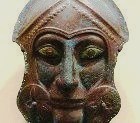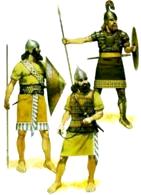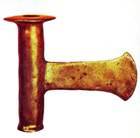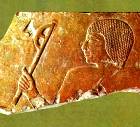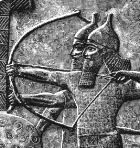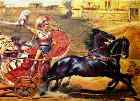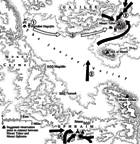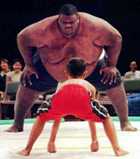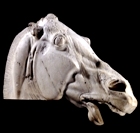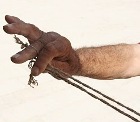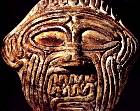Helmets in ancient warfare
Helmet design
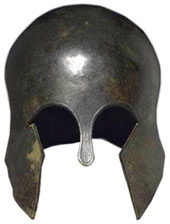 A soldier’s head is the most vulnerable part of his body. Damage his head, and he is useless. Protect his head and he can continue fighting even when other parts of his body are wounded.
A soldier’s head is the most vulnerable part of his body. Damage his head, and he is useless. Protect his head and he can continue fighting even when other parts of his body are wounded.
So the helmet is the most essential piece of armor.
A purpose-built helmet
Helmets were purpose-built to protect the wearer against specific weapons.
- At first, ancient helmets seem to have been pointed at the top, to deflect the downward force of the mace or club.
- But as time went on and the ax became popular as a weapon, the shape of the helmet was modified to counter the cutting edge of a downward-falling blade.
It required great skill to create a helmet, even though the shape was simple. It had to be a one-piece dome of forged metal covering the entire head and upper neck. There might be a hinged flap to protect the ears of the warrior, or a bar joined to the upper helmet (see the fresco of a tasselled boars’ tusk helmet below).
Some areas of the helmet needed to be thicker – for example the crown of the head.
To forge this from a chunk of glowing metal needed the talent of a master-smith.
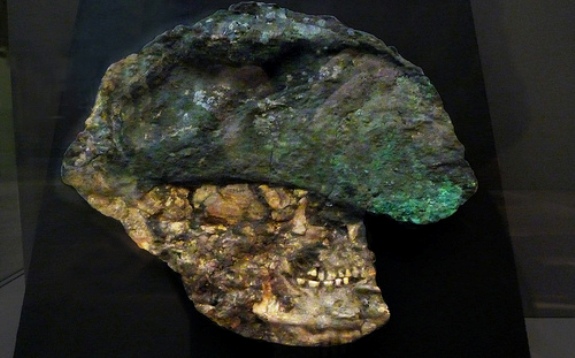
Flattened copper helmet and skull found in the Royal Tomb at Ur
Helmets as identification
Different armies favored special shapes for their helmet.
- The round- or cone-shaped helmet was best if you wanted to deflect an arrow and stop it penetrating your skull.
- But helmets could also be used to tell who was friend and who was foe – something you needed to know quickly in the heat of battle. So each army gave its troops specially shaped or decorated helmets.
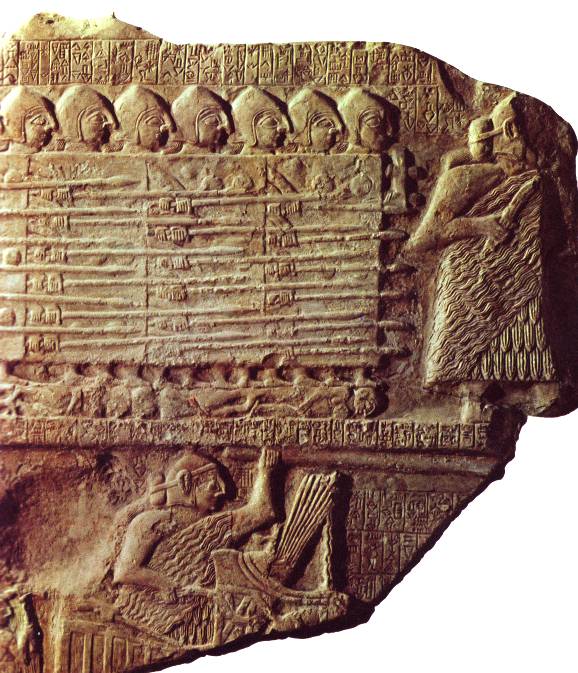
From the Stele of Vultures circa 2500BC. King Eannatum of Lagash in a distinctive helmet (above right in the panel, and also below) leads a phalanx of soldiers with metal helmets, armed with spears and socketed axes. Notice that they are trampling on the bodies of slaughtered enemies.
- Some went further, giving different helmets to various units, so the commander could identify the position of each unit at all times.
- Sometimes the shape of the helmet and its decoration came from a tribal or other tradition and served no military purpose.
Interestingly enough, ancient helmets never covered the whole face, as they did later in European armor. But they sometimes had an armored neckband, which protected the gap between the helmet and the coat of mail, a collar made of scales.
Helmets in wars before Abraham
The technology of armor was constantly evolving. By 3,000BC metal workers were making helmets of copper (see picture above) as a defense against the stone or metal mace.
These helmets must have been padded with an inner helmet of leather or quilted fabric.
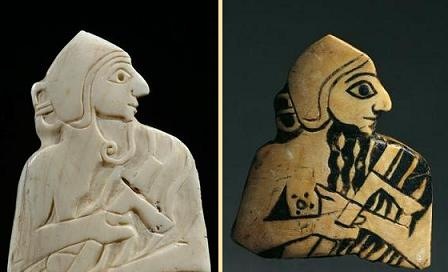
Inlaid panels from Mari
By 2,500BC the inventive Sumerians had bronze helmets, spears and axes.
The means of protection with which the Sumerian warrior is most definitely associated is the metal helmet. This is very well depicted in the Standard of Ur, the Stele of Vultures, and the inlaid panels from Mari (see above). You can see the helmet was slightly pointed and covered both the ears and back of the neck.
This type of helmet, with slight changes, was also found in the excavations at Ur, covering the skulls of buried bodies.
Such helmets were also worn by the kings, and had a recess in the rear for the hair and plaits – upper-class warriors seem to have been proud of their thick coils of hair.
Belonging to this type is the ceremonial gold helmet from Ur. And it is also shown on the conch plaque from Mari (above right) and the Stele of Vultures (above).
Period of the Patriarchs
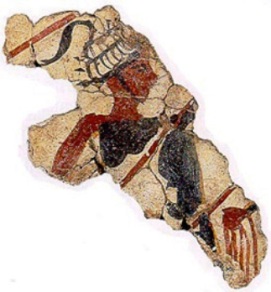
Tasselled boars’ tusk helmet on a fresco dated around 1600 BC from Thera island
The helmet, too, was in extensive use by warriors in the Late Bronze period. Those worn by some of the enemy chariot drivers in the Thutmose IV chariot relief are slightly pointed and cover the ears and the forehead up to the eyebrows.
This metal headgear must have become very hot in battle, and so it was covered by some insulating material, which was also decorative.
- Some helmets, for example, had long feathers stuck to the crown, their points meeting at the top, their broad portions fanned and covering the metal
- Some were overlaid with a cloth-piece, or cloth strips (see above)
- Some had a tassel attached to the crown and knotted at the back like a plait
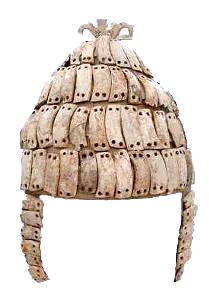
Compare the image above with this reconstructed Greek helmet
Egyptian warriors also wore helmets, especially in assault.
The piercing axe, a universal weapon in this period, was primarily designed against this metal helmet.
As defense against the axe, helmets often had ‘horns’ on either side, to catch the axe in its downward swing and render the blow useless.
What’s the evidence?
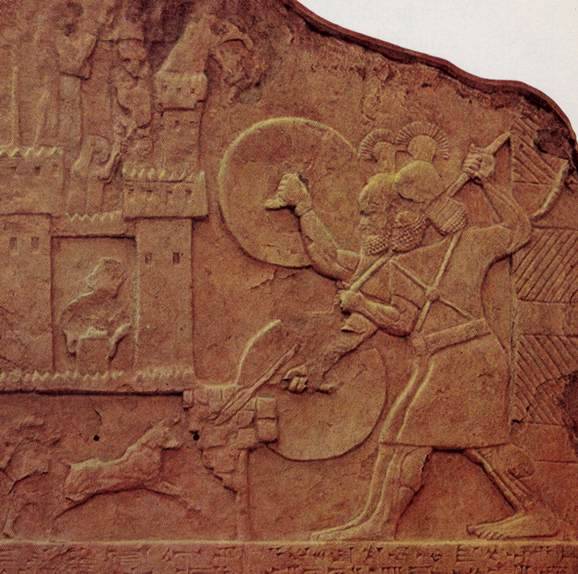
This relief may show the storming of the cities of northern Israel by Tiglath-pileser, described in the Bible at II Kings 15:29. Two warriors with spears, round shields and extraordinary decorated helmets hack at the bricks of the city’s Iow outer wall with their spears. The huge shield behind them is the usual protection given to archers in Tiglath-piIeser’s day. Relief from southwest palace, Nimrud, TigIath-pileser III (745-727BC), British Museum.
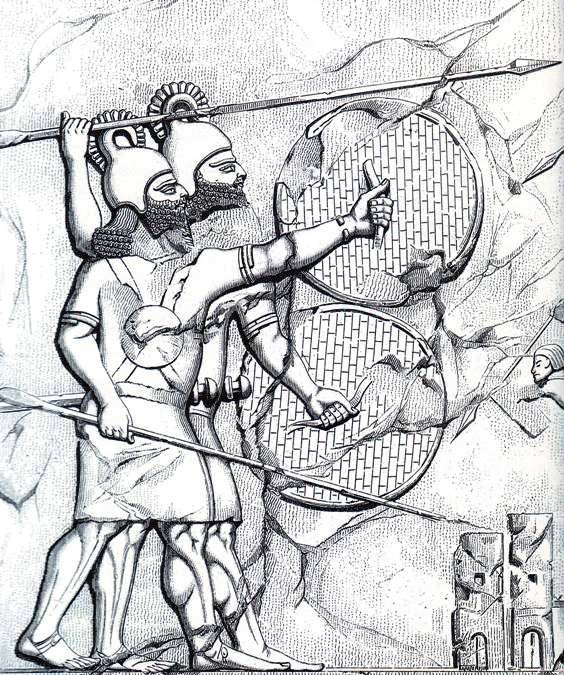
Drawing of a similar engraving showing plumed helmet, probably designed
to identify particular types of soldiers or segments of the army
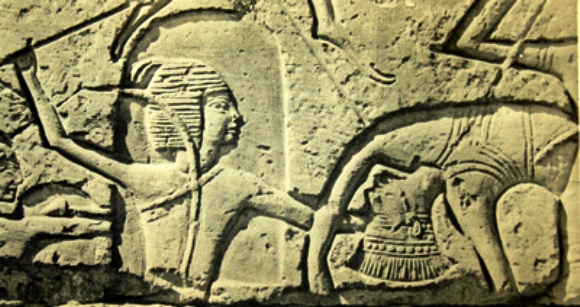
An Egyptian soldier in the act of killing a warrior of the ‘Sea Peoples’ in the Medinet Habu temple relief’. Both men appear to be wearing headgear that was half helmet, half wig.
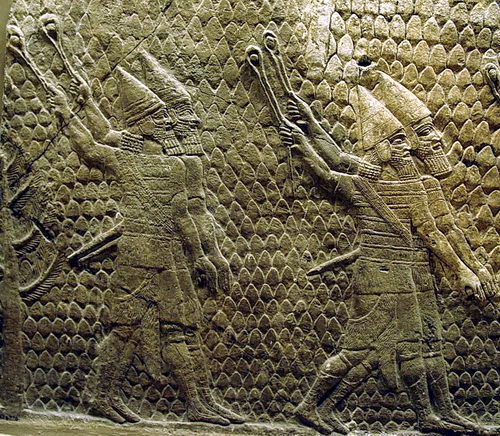
Helmets and armor worn by Assyrian sling-shot soldiers, forerunners of a modern-day rifle squad
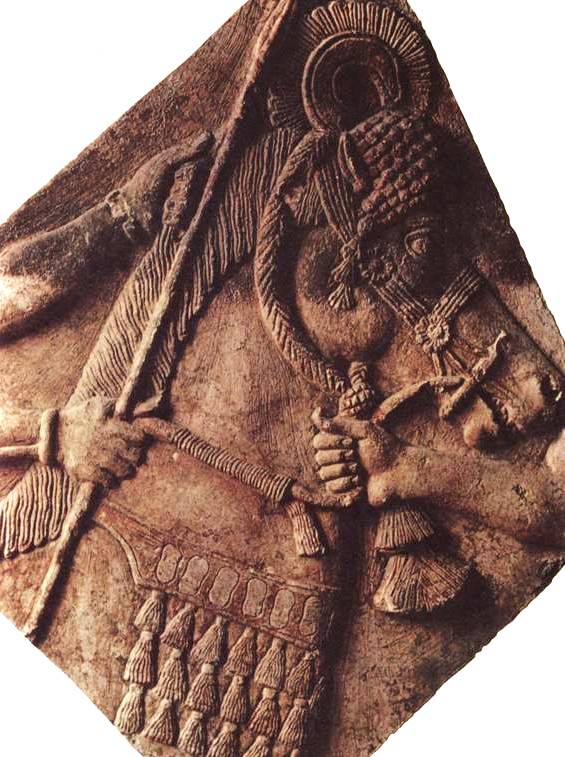
Horses were sometimes given protective/decorative headgear similar to the plumed helmet of their owner; from the palace of Sargon, Khorsabad 721-705BC.
Search Box
![]()
War helmets – links
__________
© Copyright 2006
Elizabeth Fletcher

